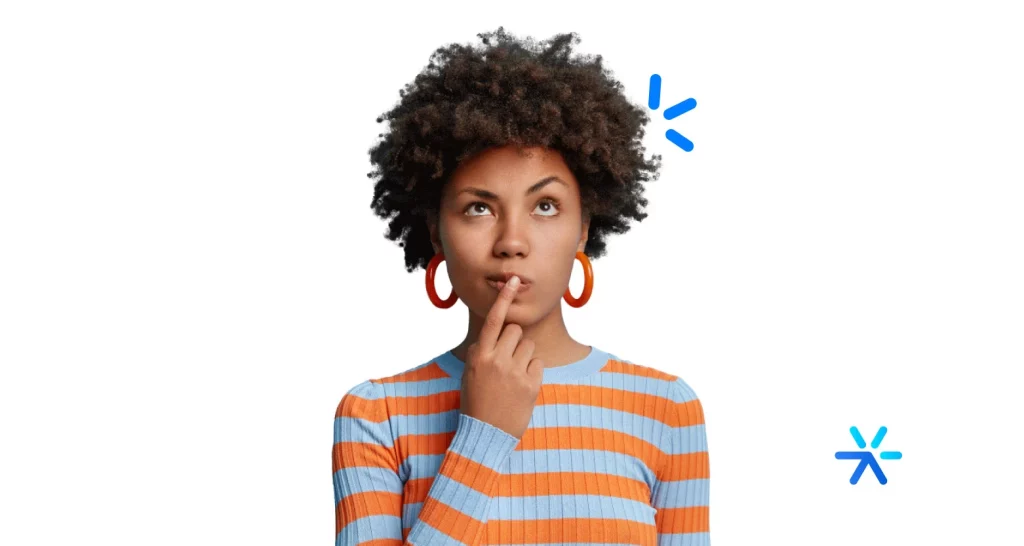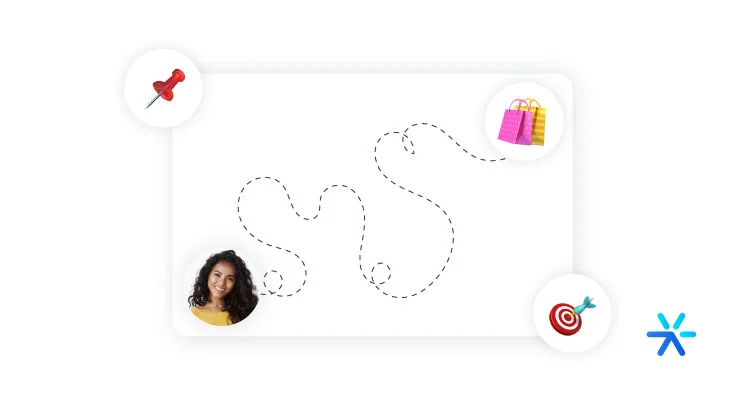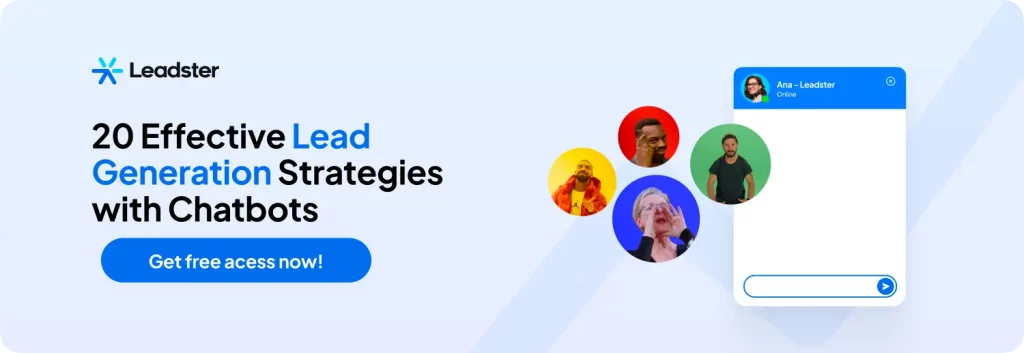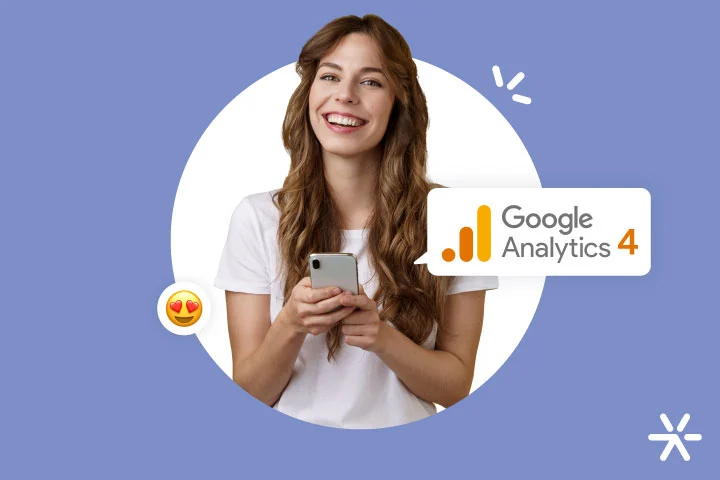The 4 Social Factors that Influence Consumer Behavior
You already know the social factors that influence consumer behavior. It’s not a question: it’s reality.
Every entrepreneur who starts a business dealing with sales has almost a sixth sense, a deeper insight into what makes their customer buy.
The methodologies, systems, KPIs, and metrics are supports for this innate knowledge that the trader possesses.
But think of a poet: they have an innate talent with words, but to become a good writer, they needed to read many books, seek many references, study their art.
With entrepreneurs and salespeople, it’s the same thing. You already have talent, and you will realize that you already knew a lot of what we will talk about today. But you will also come into contact with some concepts that you were not familiar with.
That’s evolution. And it starts now. Shall we?
The Various Categories of Factors Influencing Consumer Behavior

There are several factors that influence consumer behavior. One of them is the social factor, but there are others that are much more specific and still others that are absolutely general.
Navigating through the waters of consumer purchasing decisions is challenging, so the more information, the better!
But one point you need to consider before we delve deeper into the personal factors that influence consumer behavior: take them as a reference, not as law.
Nothing is set in stone, especially with so many consumers in so many different segments. It’s good to know the influencing factors and be familiar with them. But it’s not good to rely entirely on them.
Mix a bit of instinct with theory and then analyze everything in practice, okay? And with that, we begin our list:
Market Trends
As you read this article, there are various forces manipulating the market. This is normal and quite expected: the market was born to be manipulated by other companies.
In fact, the manipulation of buying habits, the creation of competing trends, is what gives the name “market” its meaning.
There are brands working every day to showcase their products and generate demand. And this movement greatly impacts the consumer both in their discovery process and in the decision of what to buy.
The examples don’t have to be so obvious, like the decline of electronic typewriters with the emergence of computers. They can be quite subtle.
For example, consider the change of seasons in Brazil. We have a few cold months in some regions of the country, but nothing that justifies a complete wardrobe change. Yet every year, all clothing stores launch their seasonal collections.
Also, consider the case of Apple: they have always set trends in the design of their MacBooks. Even with hardware that is much weaker than other notebooks in the same price range, demand exists because Apple created a trend.
Innovation helps in this case, but it is not the only factor responsible for keeping your product in the spotlight. Often, it takes months and years of work to dictate a behavior and keep it in the popular imagination.
Financial Factors
Here we need to talk a little more about the idea of Target Audience, Persona, and ICP.
You need to know your audience to understand how financial factors influence consumer behavior. This includes issues like:
- Price;
- Payment terms;
- Cost-benefit ratio;
- Warranty;
Accessibility of your trial (in the case of SaaS Self-Service, platforms that do not offer free trials without a credit card can be inaccessible to small businesses and individual entrepreneurs);
Among others. Financial factors are very important to consider, but always remember that they are 100% linked to your target audience.
Personal and Demographic Factors
Another extremely important point that is also related to your target audience.
You need to understand what the most common sales objections are in your target audience and work to address them through your products.
By deeply understanding your audience, you will grasp what motivates them, what repels them, their habits, when they buy, how they make decisions, and so on.
These points cannot be generalized. You may find coincidences here and there among different segments, but knowing your own audience to determine these values is fundamental.
The most common personal and demographic factors include:
- Age;
- Occupation;
- Gender;
- Personality;
- Lifestyle;
- Place of residence;
- Current geographic location (if traveling, for example);
Among others that are more specific.
Psychological Factors
There are factors that influence consumer behavior that cannot be simply described. Psychological factors are the best examples of this.
Sometimes, you will notice differences in the performance of your advertising campaigns — one performs well and another does not, even though the offer is the same.
Why does this happen? Simply put: psychological factors. They are interesting because they are quite unpredictable and have an influence on all the other factors I mentioned so far.
For example, consider the price: think about two very similar sales CRMs, but one costs half the price of the other. Which one is better? Many people use price as a psychological factor in their decision — the more expensive one is always better.
Another point of convergence is the trend itself. New products emerging and all the marketing behind them directs consumer attention. This helps the sales of newcomers, while veterans need to keep up and innovate.
The most common psychological factors are:
- Motivation — why does the customer buy?
- Perception — how does your customer see your product or brand?
- Learning — does the customer know your product, brand, or segment?
- Attitude — what does your customer do to solve their problems?
- Beliefs — what does your customer believe about your brand or market?
Social Factors
Finally, we need to talk about the 4 social factors that influence consumer behavior. They are:
- Culture;
- Social status;
- Reference groups;
- Families.
You will find convergences with other factors influencing consumer behavior here and there, with social factors along with psychological ones presenting the most of them.
This is because we are people, and people have feelings and live in society. Social factors aggregate all the other factors because purchasing decisions are not linear or black and white: they are constantly changing.
In the section below, we will delve a little deeper into the social factors. Shall we see how they influence consumers?
What Are the Social Factors Influencing Consumer Behavior?

As we discussed, there are four social factors that influence consumer behavior.
But what is their relationship with other factors? And what exactly does each of the social factors describe?
Once again, it’s important to emphasize that you have all the tools available to get to know your audience better. All the factors listed here can be confirmed through careful observation and a data-driven approach.
This holds true across various segments and business models, from SaaS sales to classic retail.
That said, let’s delve further into the 4 social factors that influence consumer behavior.
Culture
What culture is your customer immersed in?
It’s important to be specific here because Culture can have positive, negative, or no impact at all, being irrelevant in your situation.
For example: if you open a Brazilian-style restaurant in the United States and open for lunch, you’ll encounter a significant cultural shock — Americans typically don’t stop in the middle of the day to “waste” an hour or two having lunch. They value dinner more.
Similarly, trying to sell a B2B SaaS solution the same way you would in B2C won’t work. The culture is different, even if the product is similar.
For instance, cleaning products for businesses can’t use the same strategy as those for supermarkets.
Culture influences much more than just your digital marketing. It guides your efforts in creating both advertising pieces and ads, as well as in deciding how your business model will be.

Social Status
Social status is more than “people from Class A buy more expensive products and people from Classes C and D buy cheaper ones.”
That’s a very reductionist way of looking at this social factor, which definitely influences consumer behavior a lot.
Social status is tied to the product, price, and value. But the three don’t necessarily have a direct causal relationship.
For example, consider a very rare book found in a used bookstore. It’s a cheap product and may be in poor condition due to being used. But for someone who finds it, the value is high.
If a college student has this book and no one else can get it, they enjoy a higher social status. The fact that they found this book after hours of searching in the bookstore already brings a significant social bonus.
Price also has a great influence, but it’s rarely so stratified. Take the latest iPhone, for example: at launch, it easily exceeds the value of US$ 900.
It’s important to always consider people’s imaginations. What do they want, what do they long for? Social ascent is a reality, as is accessibility. Good brands divide their product or service portfolio taking these factors into account.
Reference Groups
Every person has people around them who positively or negatively influence their buying habits and what they buy.
These people can be many and can even be geographically isolated. Family, friends, partners, colleagues, etc.
This group can act in various ways. A friend who sees another using an interesting product has, in addition to their interest, a positive reference for the purchase.
Reference groups are divided into two:
- Primary Group: These are the closest and most informal groups — family, friends, people you see at least once every week;
- Secondary Group: These are the more distant and formal groups: clubs, soccer fans, colleagues, religious congregation, people the customer admires, etc.
Reference groups also have a strong appeal in the social status-related factor. Social factors are closely connected to each other and also to those we mentioned above.
Finding it complicated? That’s how it is: people are complicated. The important thing here is to understand. You need to know what these factors are in order to create increasingly better personas and empathy maps.
Families
This is one of the most practical factors, seeking to link a person’s consumption behavior according to their family status.
We’re talking here about stages in an individual’s life. This is very interesting to approach because strategies that take this into account — especially with targeted ads — are quite common.
Before the big boom of Facebook Ads (now Meta Ads), the American department store Target found itself involved in controversy due to this targeting, discovering that a girl was pregnant even before her family knew.
The most common categories of social factors influencing consumer behavior related to a person’s family stage are:
- Single: higher spending on personal development, frivolities, games, etc.;
- In a relationship: joint spending, for the couple’s enjoyment and development of life together (pets, rent, etc.);
- Complete family: spending for the home and children, focusing on developing the family to its fullest potential;
- Empty nesters: spending on medicines, exams, specific products for the elderly, and reactivation of spending on frivolities, trips, etc.
Together, these 4 social factors influence consumer behavior every day, but rarely in isolation.
The convergence of all these factors, however, will join more practical needs related to your product or service. And this is where the Buying Journey comes in.
More on that below:
How a Customer Decides to Make a Purchase?

Alright, so we’ve talked about the factors that influence consumer behavior, including social factors and a few others.
Are there others? Of course: some are specific to segment to segment, some are specific to the business model — we’ll discuss more about B2C and B2B in the next topic — among others.
The more you look, the more factors you’ll find. So never stop looking.
But how exactly does your customer decide to make a purchase? What steps do they take when realizing they need a new product?
Let’s delve into that now. See how a person’s buying process works:
Getting a Better Understanding of Purchase Decision
There are several practical factors that influence Purchase Decision. They are best studied through the Marketing and Sales Funnel methodology.
The purchase decision is a psychological process, of course, but it’s also practical. Studying it requires understanding the steps your customer takes before deciding on an item.
There are specific pieces of information your customer is looking for, valuable opinions from their peers, objections that need to be overcome, value comparisons (not necessarily price) between products, and much more.
We have an article that goes much further than I could go here in this brief topic. Continue reading there for this more practical part, okay? For now, let’s continue on the Buying Journey.
➡️ Digital Consumer Experience: 5 Traits and 10 Tips
Understanding the Buying Journey
Another super practical aspect to understand the social factors that influence consumer behavior is the Buying Journey.
The Marketing Funnel is a tool that helps you understand the sales process — in other words, it’s a view of your brand to consumers.
The Buying Journey is the opposite: it’s a view from consumers to your brand.
It might seem like the same thing, but the stages are different, and the Funnel always describes your actions in lead generation and closing sales. While the Journey focuses on what your customer thinks before buying.
The four classic stages of the Buying Journey are:
- Learning and Discovery: people who are becoming interested in a topic for any reason. For example: increased traffic on the website. These people will research this topic and read relevant content on the subject to inform themselves.
- Problem Recognition: armed with information, the person starts thinking about something that bothers them. Continuing with the example: low traffic implies fewer leads. And fewer leads mean fewer sales.
- Solution Consideration: what can the person do to mitigate their problem? Still in the example: how to generate more leads for my website? What are the best techniques and where to invest?
- Purchase Decision: the person already knows what they need to do to solve their problem. Now, they need to find the right brand.
Note that these steps are not linear at all. Your potential customers can enter at any stage of the Journey. And they will enter.
You can also lose interested people in this process. Maybe you worked on the first two stages, and the person continued their process with another brand.
But since we’re on the subject of non-linearity, I have one last point to close the article: what are the social factors that influence B2B consumer behavior?
Factors Influencing B2B Sales

Our last topic today is B2B, a sector that is highly competitive and has factors that influence consumer behavior completely different.
B2B comes with an extra level of complexity because these factors can — and will — change from company to company.
Experienced B2B traders recognize this complexity and work on their sales process seeking accessibility. It’s very common to see different digital and offline marketing strategies working together to increase sales.
All set to talk a little more about B2B?
The Buying Journey and its Decision Makers
Today, sellers have much less impact on the buying decision in the B2B journey. This is natural and expected with the internet and more and more companies competing for space and the attention of potential customers.
Gartner mapped the time decision-makers spend discussing the product directly with B2B company representatives, and the results are quite surprising.
During the B2B buying process, only 17% of the time is spent talking to company representatives. The rest of the time looks like this:
- 27% researching online independently;
- 22% meeting with the purchasing department;
- 18% researching offline;
- 16% other activity.
See how interesting this is: the second most time is spent meeting with other decision-makers. This means that sellers have a very small window to insert themselves into the buying process.
Also, note how most of the time is spent on online research. Your brand needs to invest in content marketing to position itself as an authority in this area and impact B2B.
To Buy, Decision Makers Have Steps to Follow
The factors that influence B2B consumer behavior, in addition to those mentioned above, also include corporate ones.
That is: those specific to the company, related to the tasks that buyers must fulfill.
This is almost a shopping journey in itself. According to Gartner, here are the main stages:
- Problem Identification: “we need to do something”;
- Solution Exploration: “what’s available in the market to help us?”;
- Necessary Requirements: “what does the product need to have?”;
- Supplier Selection: “does the product do what we need?”;
- Validation: “I think it will work, but we need to be sure”;
- Consensus Creation: “we need the entire team on board”.
Information is Fundamental
Throughout this process, information is crucial to maintain the interest of your potential customer or lead in your brand.
Remember that most of the time spent in the B2B sales process is on research.
According to Gartner, B2B companies that facilitate the purchasing experience have results up to 3 times higher than those that don’t follow this process.
Information can come in many different forms. A guided process, dedicated onboarding, a forum moderated by a Community Manager, and extensive documentation about the product offered (especially in SaaS) are all very important.
So, did we manage to paint a general picture of the social factors that influence consumer behavior?
I hope so. Always remember the warning not to see these factors as something strict that explains the behavior of all people at all times.
Take it easy and mix a bit of instinct with information.
So yeah, now you know everything you need to know about consumer behavior, both on the B2C and B2B reality.
Now it’s time to take action. Did you know you can personalize your chatbots approach to basically convert more using the guidelines we discussed along the article?
You can do that with Leadster. Our chatbot was designed to generate more leads on your website, automatically converting visitors with a personalized message for each of your pages.
You can test it now for free, no credit card required. Do it today! Just click on this link and we’ll take it from there, ok?
Thanks for reading!








